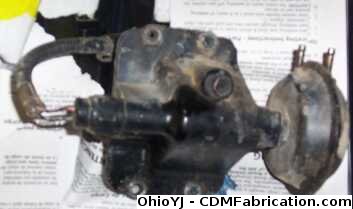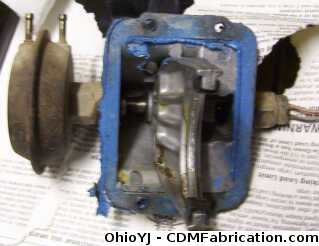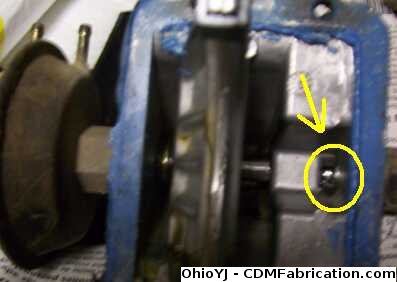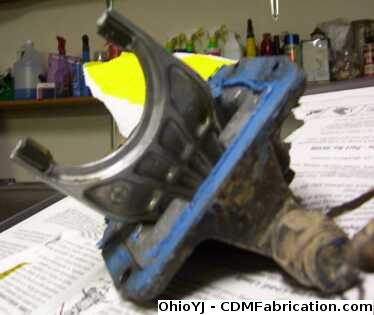
|
|||
|
Jeep FAQ How-To Articles Quick Reference Product Reviews My Buildup Random Home |
You should see this on the passenger side of the front axle.  4 bolts hold it on, I believe it takes a 7/16" socket to remove them. Have a drain pan ready because when you pull this out you will lose a little fluid, shouldn't be very much though. Disconnect the vacuum line going to the bladder on the right side, also disconnect the electrical connector on the left. Once you get the connector, vacuum lines, and 4 bolts out, you can simply pull the actuator straight back and off. Here you can see the "shift fork":  Here's what happens: Inside the axle (you can see this from in the hole were the actuator was, since you should have removed it at this point),  The passenger side axle is actually two pieces, when in 2WD drive the wheel will obviously turn the right shaft, but the inside shaft on the differential will sit perfectly still. When you shift into 4WD the actuator uses that shift fork to slide a collar over to lock the shafts together, therefore you have this:  Ok now as for your light, in this picture you can see the other side of that electrical sensor you unplugged, its circled in yellow.  When the shift fork slides over it either presses or releases that sensor/switch, which turns your light on and off. Now, to put your minds at ease, this vacuum disconnect, comes off as one piece, there is nothing inside the axle, that you can physically remove, or break, or take out, so you will only be removing this one piece. That collar in there will slide back and forth by hand, you have to put the shift fork back on the center of this to reinstall the vacuum disconnect, but this is very simple, you can clearly see everything, and can position the shift fork by hand. It comes off as one piece, which cannot be separated into more pieces, unless you take it farther apart on purpose, nothing will fall out (assuming you have no broken pieces).  Next if you take this out, and its destroyed beyond repair, you can do your best to put it back on, or you can even drive without on for short distances (I'd say less than an hour, don't drive it for a week then fix it, and if you do drive it a bunch, check your fluid levels!). You may lose a little fluid, as some will leak out, but not much, so worse comes to worse, you can drive to a shop without it. (You may want to plug the vacuum lines with a screw or something, just so you don't have a vacuum leak.) Hope this helps, and gives you a little better understanding, of how this actually works, any questions feel free to ask.
© Copyright 2006 - 2025 Mike Lee
|
|
|